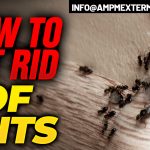Getting rid of Tiny Small little Black Sugar ants in a house or building
How To Get Rid of Ants? First, understand the ant colony and its queen. To solve an ant problem, you need to first eliminate the ones you don’t see to get rid of the ones you do see. Watch the trailing ants. Don’t spray the ants! Set out ant bait. Hold off on cleaning. Keep it clean, keep the excessive moisture away from the building, seal cracks and crevices.
- Eliminate freestanding water. Something as little as a wet napkin on the counter can sustain hundreds of ants. Wipe your sinks down regularly and inspect pipes for condensation and leaks. If you see heavy condensation, you need to increase air circulation in that area.
- Apply caulk to all crevices they are using to enter and travel through your house. You’ll need to inspect the inside and outside of your property. The best way to get rid of tiny black ants is to keep them out of your house in the first place.
Odorous house ants eat a wide variety of foodstuffs, such as meat, cooked vegetables, dairy products, fruit juices, and pastries. They have become a major nuisance pest by infesting houses.
Identifying and Get rid Sugar house ants
Sugar house ants are small ants about 1/8th inch long and dark brown in color. They are found throughout the U.S. and in spite of their name, are only an occasional pest in the house. Their name comes from the disagreeable odor similar to the smell of rotten coconuts, that is given off when the worker ants are crushed.
Odorous house ants commonly nest outdoors in the soil under stones, logs, mulch, debris and other items. They will also nest indoors in wall and floor voids, particularly in moist or warm areas. If only a few workers (wingless ants) are observed in the house it is an indication that they are nesting outdoors and entering the house in search of food. If winged Swarmers are found indoors, or if workers are consistently seen in great abundance, it likely indicates they are nesting within the house.
Odorous house ants regularly forage for food along well-traveled trails. They feed on dead insects, sweets and meats. One of their favorite foods is the sweet honeydew produced by plant sap feeding insects such as aphids and mealybugs.
Control of odorous house ants should begin with an attempt to locate the origin of the ants. Careful and frequent observation may be necessary to develop an opinion about the source. Ants entering from outdoors can be discouraged by sealing as many cracks and gaps in exterior walls as possible.
